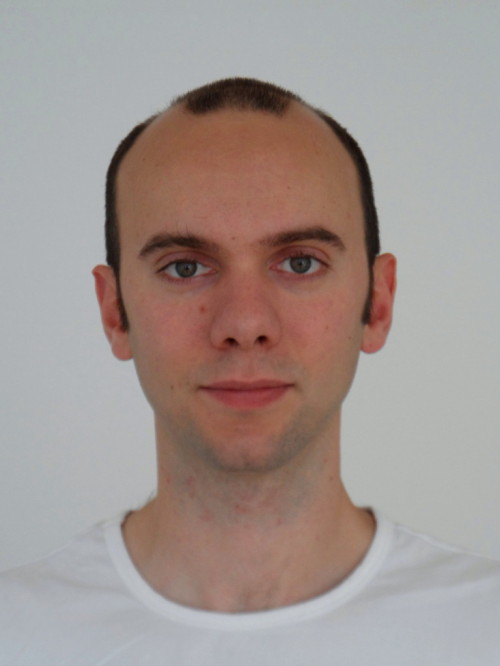Humboldt Fellow new addition to Aziz team

Dr. Tristan Petit joins the Aziz-Team. Foto: T.Petit

Simulated view of a nanodiamond. © T. Petit
Starting June 1st, Dr. Tristan Petit will be joining Prof. Dr. Emad Flear Aziz’ team for a two-year postdoc. His Humboldt Foundation Fellowship for Postdoctoral Researchers gave Petit the option to choose his German scientific host. Ultimately, he decided on the Joint Ultrafast Dynamics Lab in Solutions and at Interfaces (JULiq) that was set up by Aziz. Says Petit: “I really wanted to be on Aziz’ team as they have a lot of collective expertise with spectroscopy in water.”
26-year-old Tristan Petit earned his Ph.D. degree at the Ecole Normale Supérieure de Cachan, France, back in March of this year. His doctoral work at the Diamond Sensors Laboratory (CEA), Gif-sur-Yvette, focused on nanodiamond surface modifications to evaluate their biomedical potential. Nanodiamonds could make good “drug cabs” as they have low toxicity and their surfaces can be easily functionalized for the transport of other molecules.
Although to date, the interactions between water molecules and nanoparticles remain unclear. Petit has made it his mission to get to the bottom of these interactions: He is planning on using soft X-ray spectroscopy to study water-based dispersions of nanodiamonds “in situ” on a microjet. This may provide important clues about how these special nanoparticles behave under physiological conditions, in other words, in the body. “Thanks to the unique Lixedrom experimental setup, we’re able to conduct experiments that can’t be done anywhere else really. Ultimately, that was a strong motivating factor for me to come to Berlin,” admits Petit.
arö
https://www.helmholtz-berlin.de/pubbin/news_seite?nid=13730;sprache=en
- Copy link
-
Ernst Eckhard Koch Prize and Innovation Award on Synchrotron Radiation 2025
At the 27th BESSY@HZB User Meeting, the Friends of HZB honoured the dissertation of Dr Enggar Pramanto Wibowo (Friedrich-Alexander University Erlangen-Nuremberg). The Innovation Award on Synchrotron Radiation 2025 went to Prof. Tim Salditt (Georg-August-University Göttingen) and Professors Danny D. Jonigk and Maximilian Ackermann (both, University Hospital of RWTH Aachen University).
-
Synchrotron radiation sources: toolboxes for quantum technologies
Synchrotron radiation sources generate highly brilliant light pulses, ranging from infrared to hard X-rays, which can be used to gain deep insights into complex materials. An international team has now published an overview on synchrotron methods for the further development of quantum materials and technologies in the journal Advanced Functional Materials: Using concrete examples, they show how these unique tools can help to unlock the potential of quantum technologies such as quantum computing, overcome production barriers and pave the way for future breakthroughs.
-
Peat as a sustainable precursor for fuel cell catalyst materials
Iron-nitrogen-carbon catalysts have the potential to replace the more expensive platinum catalysts currently used in fuel cells. This is shown by a study conducted by researchers from the Helmholtz-Zentrum Berlin (HZB), Physikalisch-Technische Bundesanstalt (PTB) and universities in Tartu and Tallinn, Estonia. At BESSY II, the team observed the formation of complex microstructures within various samples. They then analysed which structural parameters were particularly important for fostering the preferred electrochemical reactions. The raw material for such catalysts is well decomposed peat.
